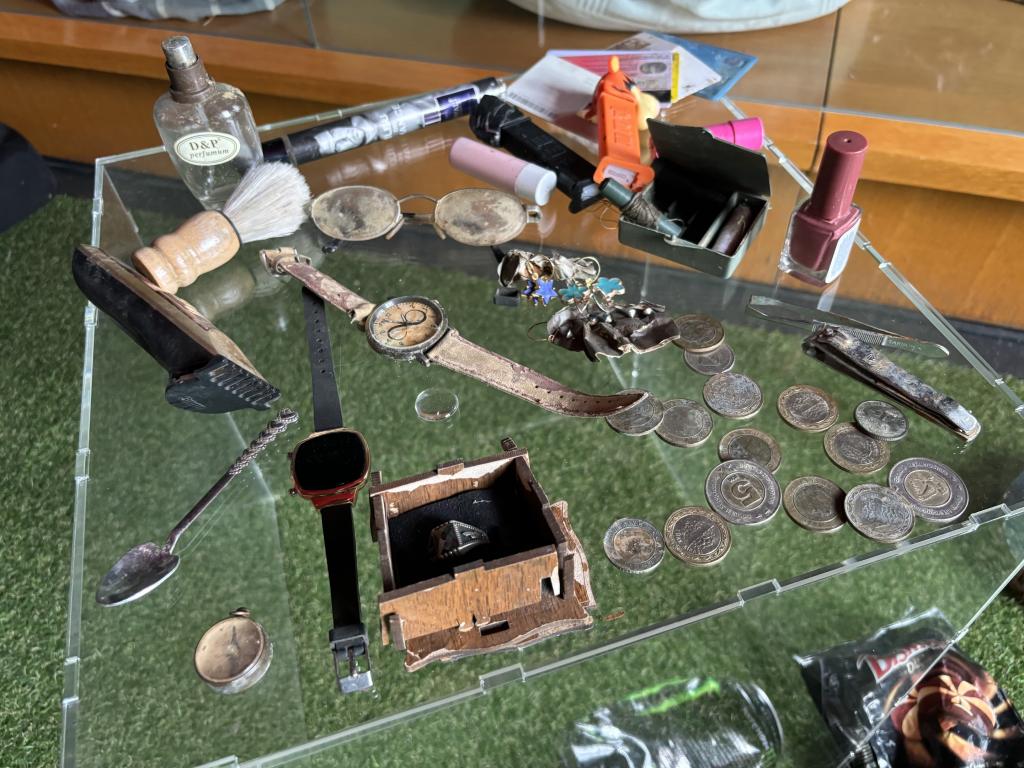The exhibition entitled The Garden of the (In)visible will be inaugurated on Thursday 31 October at the Maison de la paix. It is the result of a collaboration between Alessandro Monsutti, Professor of Anthropology and Sociology at the Institute, and colleagues from the Universities of Trieste and of the Littoral in Koper, Roberta Altin, Giuseppe Grimaldi and Katja Hrobat Virloget. It tells the story of migrants through the objects they abandoned en route, on the border between Croatia, Slovenia and Italy.
Interview with Professor Alessandro Monsutti.
What thought and process led you to come up with this new exhibition, which follows on from two other exhibitions dedicated to migrants and refugees?
This exhibition — or should we rather say this installation — results from an initiative of my aforementioned colleagues. I was spending the 2023 autumn semester on sabbatical leave in Trieste. They were kind enough to integrate me into a joint project funded by Transform4Europe, an alliance of ten EU universities. With students, but also volunteers of local associations, we toured the borders between Croatia, Slovenia and Italy. We collected the personal belongings left behind by migrants, who had travelled along the so-called Balkan route and wanted to enter Trieste with clean clothes.
Similar to the previous exhibitions I have brought to the Geneva Graduate Institute (Destiny/Destination and Je suis d’où je vais!), the idea is to launch a public debate on a pressing issue of our time, to associate critical thinking with emotions. These initiatives represent for me a way to revisit the themes of my research while hoping to reach an audience beyond academia. They allow me to expand the limits of my work. Art does not reproduce the visible, it makes visible. The conjunction in the written word of anthropological reflection and poetic evocation, in dialogue with visual arts, has become a requirement for me.
The objects in this exhibition were collected on the Balkan route. Can you tell us more about this perilous Balkan route?
The Balkan route — the land counterpart of the deadly Central Mediterranean sea route — is actually a rather misleading denomination for entwined circulations. People coming from a variety of countries, ranging from Afghanistan to Syria, from Eritrea to Iraq, face border control, detention, pushbacks… Narratives by journalists and politicians, but also humanitarians, rely on dramatic images and mapping with arrows that convey a sense of aggression. This iconography induces the idea of flows of undifferentiated people moving from the Global South to the Global North.
Historical and sociological contextualisation leads us to debunk such a perspective. Unlike what is repeated over and over again, we are not in an unprecedented era of human mobility. Look at the 19th century, by contrast, a period in which colonial empires reshaped the world population by bringing millions of Europeans and obviously African slaves and indentured Asian labourers to the colonies. Whole continents have been depopulated and repopulated in the process. Human history, since humans are humans, has been shaped by migration. The newcomer on the scene is the nation-state, which sovereignty is contingent on its capacity to control a territory and its population.
The exhibition brings together the visible and the invisible. How have you chosen to illustrate the history of these visible objects and their (in)visible owners?
Most of the objects we collected populate our everyday lives: jogging shoes, jackets and hats, trousers, backpacks, sleeping bags, bottles, packages of dry fruits, powerbanks, cuddly toys and diapers... There are also refugee cards that may attest the passage in certain countries, medicines such as painkillers and foot cream, and even sacred items like prayer beads and mats. Abandoned in the forests where local people go for a walk, they render visible the passage of migrants who tend otherwise to be rendered invisible.
Let us refer to the work of the Italian philosopher Roberto Esposito. He shows how modernity, through a series of preventive security measures, is an immunitary response when the religious dispositif stemming from the promises of transcendental salvation has vanished. The state becomes the immune device to protect the community. Against this background, the migrants — and therefore the objects they leave — may be seen as a source of danger and pollution, an infection not so dissimilar from that caused by the SARS-CoV-2. However, beyond a certain limit, the immune system attacks the organism that it is supposed to protect. For Esposito, community is not a “common being” that needs to be defended against those who do not belong to it but a “being in common” that is nurtured when exposed to what is supposedly exterior.
What message would you like to channel through this exhibition and how has it been received in Slovenia and Italy?
The purpose of the installation is neither to aestheticise nor dramatise the plight of the migrants. The scenography is ironic, with artificial grass and kitsch flowers… and then muddy objects of everyday life that we have collected, dried but not cleaned, bringing them from waste to artifacts to be exposed.
We have presented The Garden of the (In)visible in a variety of settings: universities but also visitor centres and communal houses… The message is in the process itself. Our intention is to launch a public debate, to confront perspectives and lived experiences not only of the mobile people but also of the inhabitants of the borders. We have faced reactions of curiosity, solidarity, empathy, but also at times hostility. Everything is better than indifference though. These items paradoxically open a dialogue between the visitors and the migrants, even if the latter are not present. They visibilise the passage of people near the houses of other people, in a dialectical relation between the familiar and the strange, the reassuring and the disturbing, with the ultimate prospect to go beyond the immunitary dehumanising of fellow women and men.





